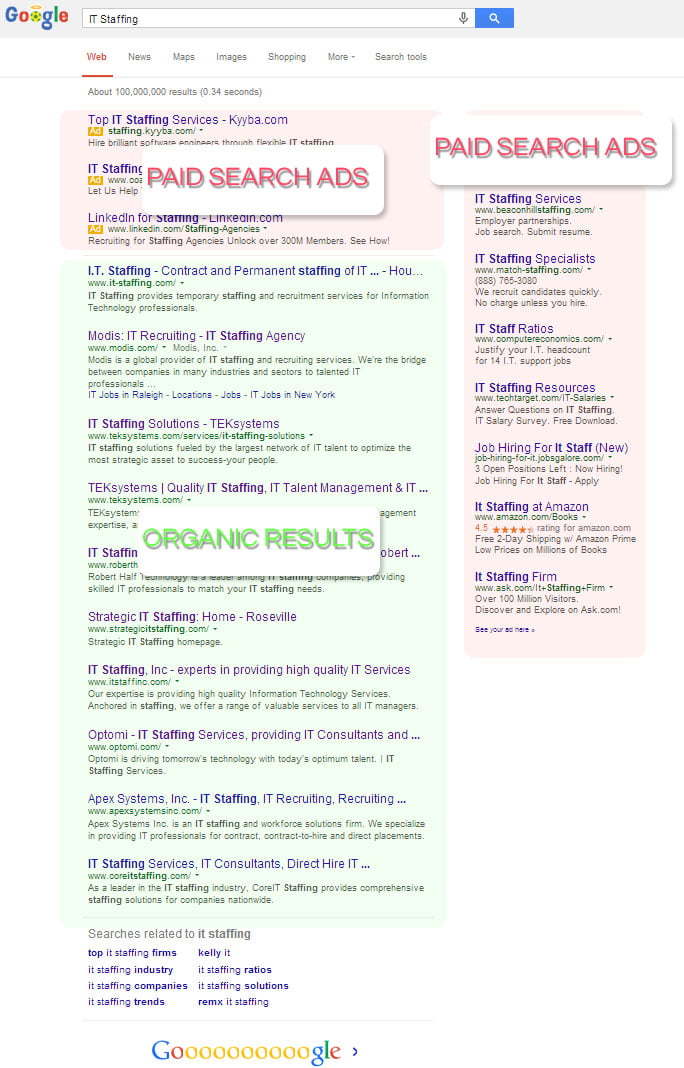Search Engine Ranking
Our methodology for determining and reporting Search Engine Ranking is the same regardless of whether we’re customizing reports for our clients or reporting on industry trends in general. We use a standardized methodology so that we can compare the results over time. This methodology is simple and straightforward. It’s the same core methodology we’ve been using since 2006, but changes to Search Engines since have necessitated adaptation.
Ranking on the Google is Local
Google’s evolution from showing a global result set to showing localized result sets is a giant change. It’s enormous in terms of its impact on national and global brands. It adds a new dimension to reporting Search Engine Rank. This not only means bigger reports, but the new scope of data presents more of a challenge to drawing conclusions.
What is Search Engine Rank?
People use Search Engines by entering a search phrase, sometimes only word or two, and receiving a list of web pages back. When Search Engines like Google Search show a list of web pages matching the search phrase, they’re listed one at a time. The first page listed on a Search Engine Results Page is said to have the #1 Rank. The second page listed is given the #2 rank, and so on.
Why is low rank good?
The lower a page’s rank is, the more traffic it can expect from search engines. For website owners that are serious about getting the most search engine traffic they can, getting a low rank for a highly used search engine terms is important.
What determines a page’s Search Engine Rank?
Although Google uses over fifty variables today in determining which pages rank above others for specific terms, there are three classic pillars of SEO. These are the three primary factors that determine search engine ranking:
- Relevance – Google looks at a page’s content. Does it contain the search term? It better if it wants to get found for that term.
- Frequency – Google loves sites that publish new content often. The freshness of the content also helps to reinforce it’s credibility to Google.
- Authority – A page’s authority is determined by how many other pages with high or low authority are pointing to it. It’s tricky to get other sites to point links into yours. That’s where social media marketing and local social media efforts can really pay off.
At Massive Impressions we use a strategy called content marketing that exercises all three pillars of SEO resulting in lasting, safe results for our clients.
This description of the methodology we use at Massive Impressions Online Marketing accounts for the current state of Google today.
Five Steps in our Search Engine Ranking Methodology
Your business can benefit from better Search Engine Ranking.
Every website can benefit by improving its search engine rank. It means more visitors. For the best value SEO for websites, contact our online marketing company: Massive Impressions Online Marketing. We excel at SEO that’s a safe investment for long term brand building. Call us at (866) 800 – 3579 to learn more.

